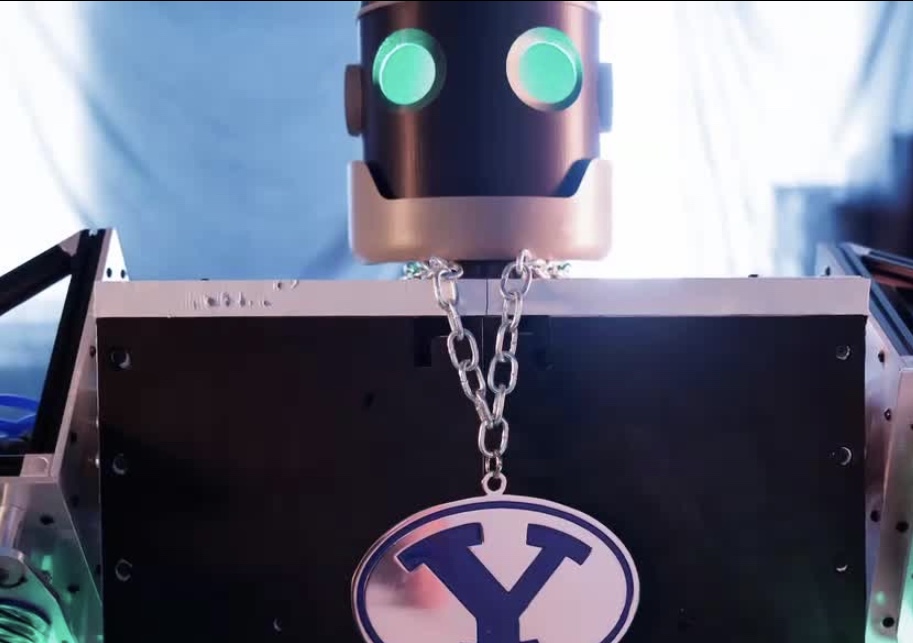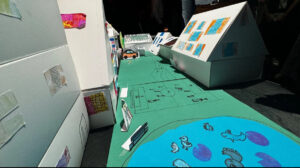
In the world of robotics, achieving versatility and adaptability has long been a challenge, particularly when it comes to handling large, unwieldy objects. The team at Brigham Young University’s (BYU) Robotics and Dynamics Lab, led by doctoral student Johnson, has tackled this challenge head-on with the development of “Baloo,” a revolutionary robot capable of interacting with its environment using its entire body. Unlike traditional rigid robots, Baloo’s design incorporates a soft, air-filled structure that allows for greater flexibility, adaptability, and safety in human-robot interactions.
The Vision Behind Baloo
The core idea driving Baloo’s development is to enhance a robot’s ability to interact with objects in a more intuitive and human-like manner. Johnson explains, “What if the robot could push with its shoulder or push things out of the way with its whole body? That expands its capabilities.” This concept pushes the boundaries of how robots are traditionally designed to interact with their environment.
Conventional robots, which primarily rely on rigid structures and precise movements, often face limitations when dealing with irregular objects or dynamic environments. In contrast, Baloo’s ability to utilize its whole body for pushing, lifting, and manipulating objects creates a new paradigm for robotic functionality. This advancement is particularly useful in environments where robots must work alongside humans, such as warehouses, construction sites, and disaster response operations.
Capabilities of Baloo
Baloo’s unique design allows it to lift and manipulate objects that would typically be challenging for rigid robots, such as ladders, kayaks, car tires, chairs, and heavy boxes. Unlike traditional robotic systems, which rely on predefined gripping mechanisms and precise positioning, Baloo can engage with objects using its entire body surface, distributing force more evenly and reducing the risk of damage to either the object or the robot itself.
One of the standout features of Baloo is its soft, air-filled structure. This feature enables the robot to safely operate in environments where close interaction with humans is required. In industrial settings, robots with rigid structures pose significant safety concerns, often requiring extensive safety measures to prevent injury. Baloo, however, offers an inherently safer alternative, as its flexible materials can absorb impacts and adjust to unpredictable scenarios.
Safety and Practical Applications
Safety is a major concern in robotic design, and Baloo’s approach directly addresses this issue. Johnson emphasizes that traditional rigid robots present a dilemma: “They either break the robot or break you, whichever one is stronger.” By utilizing soft robotics technology, Baloo circumvents this issue, ensuring that interactions remain safe and efficient.
Baloo’s applications extend beyond just industrial environments. Its ability to handle various objects and adapt to unpredictable conditions makes it an ideal candidate for healthcare, home assistance, and even search and rescue operations. In these applications, the robot’s soft structure reduces the risk of injury to humans while providing valuable assistance in lifting and moving bulky items.
Research
The development of Baloo is part of a collaborative effort involving BYU mechanical engineering professors Marc Killpack and John Salmon. Their research, funded by the National Science Foundation, focuses on advancing the field of soft robotics and human-robot collaboration.
A key aspect of their research examines how robots can collaborate with humans in manipulating heavy or awkward objects, a concept known as “physical human-human co-manipulation.” This concept, explored in their recent study, investigates the ways in which humans naturally coordinate with one another to move large items, and how those principles can be applied to robotic systems.
Another important contribution to the project comes from Shaden Moss, a graduate researcher whose master’s thesis focused on programming robots to follow objects manipulated by humans in virtual reality (VR) environments. This research opens the door for future developments in human-robot interaction, allowing robots like Baloo to respond more intuitively to human gestures and intentions.
Implications for the Future of Robotics
The innovations introduced through Baloo represent a significant step forward in robotics. The incorporation of soft robotics elements and whole-body interaction capabilities could revolutionize numerous industries. For instance, logistics companies could use Baloo to automate warehouse tasks with greater efficiency and safety. In healthcare, the robot could assist in patient lifting and rehabilitation exercises without posing the same risks associated with traditional robotic assistants.
Moreover, Baloo’s flexible structure could have profound implications for disaster relief operations. In emergency situations where human access is limited, Baloo’s ability to maneuver through tight spaces, gently push obstacles aside, and collaborate with rescue workers could prove invaluable.
The advancements in programming and VR-based interaction further highlight the potential for robots to become more intuitive and responsive in dynamic environments. With continued research and development, Baloo and similar robots could pave the way for a new generation of robotic assistants capable of seamlessly integrating into human-centric environments.
Final Thoughts
Baloo’s creation marks a significant milestone in the field of robotics. By leveraging a soft, flexible design and focusing on whole-body interaction, BYU researchers have developed a robot that not only enhances operational capabilities but also prioritizes human safety and collaboration.
As research continues and further refinements are made, Baloo’s potential applications will likely expand, influencing how industries incorporate robotics into their workflows. Whether it’s lifting heavy objects in warehouses, assisting in disaster relief efforts, or working alongside humans in everyday environments, Baloo represents the future of safe and adaptable robotics.
No comments yet.








